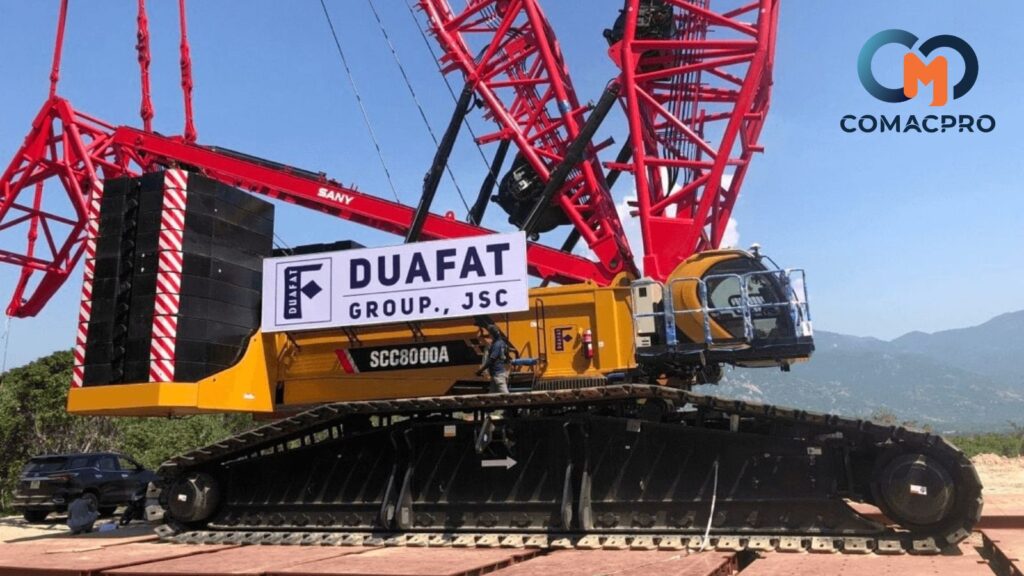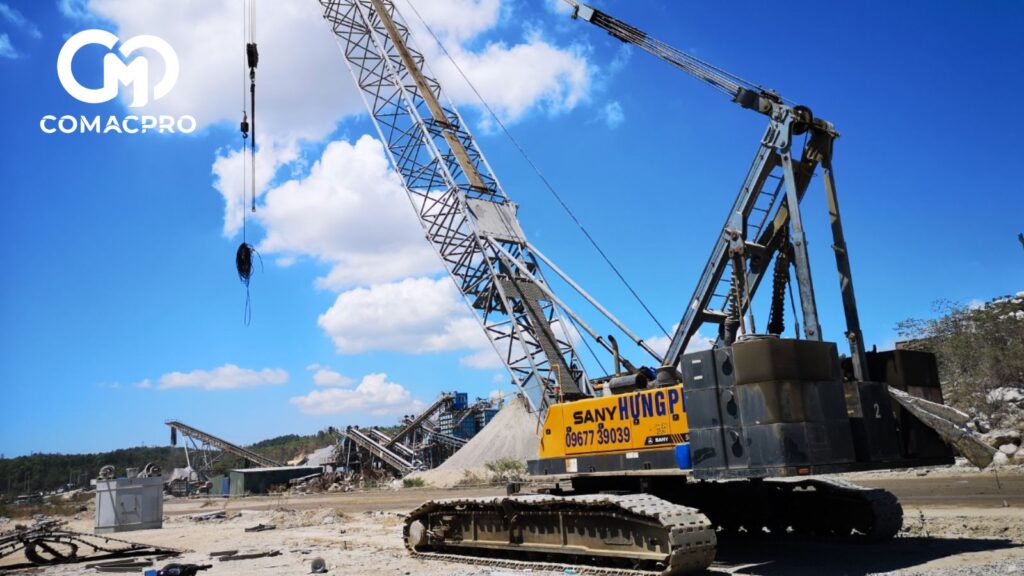Crawler cranes are no longer unfamiliar in the construction and industrial sectors, as they play a crucial role in lifting and transporting heavy loads. To operate a crawler crane safely and efficiently, the operator must understand its structure. In this article, let’s explore the components of a crawler crane with Comacpro.
Definition of a Crawler Crane
Firstly, a crawler crane is one of the most specialized types of cranes, characterized by a crane body mounted on a crawler (track) system for movement.
Crawler cranes are typically suitable for large-scale construction projects such as road and bridge works, high-rise buildings, and industrial facilities. Unlike other crane types, crawler cranes are considered top-tier heavy-duty machines thanks to their capability to lift and transport extremely heavy loads, ranging from several dozen to several hundred tons.

Additionally, this crane type can operate and move flexibly over complex terrains such as gravel, rock, and muddy ground.
Structure of a Crawler Crane
To effectively perform its tasks, a complete crawler crane consists of the following main components:
Main Frame
Like other crane types, the main frame of a crawler crane bears the lifting loads and withstands various forces during operation.
This frame is typically made of high-quality steel to ensure the necessary strength and durability.
Operator Cabin
The operator cabin is where the driver controls, maintains, and inspects the crane. It is also designed to provide a comfortable and clear view of the working environment for the operator.
Crawlers (Tracks)
The crawler is an essential part of the crane, driven by two independent engines.
With its wide-track design, the crawler crane benefits from a large contact surface, allowing it to move on soft ground.

To protect the track system, mats should always be used during movement and lifting operations. It is essential to ensure balanced movement to prevent tipping or sinking.
Counterweight
The counterweight serves to balance the load and provides stability during crane operations. Depending on user needs, the counterweight can be detached and reinstalled.
Slewing Ring
The slewing ring, also known as the turntable, is a crucial component that allows the crane to rotate 360 degrees around a vertical axis.
This enables the operator to lift and move loads at various angles without needing to reposition the entire crane.
Crane Boom
The boom of a crawler crane typically includes a main boom and an auxiliary (jib) boom. Depending on the project’s requirements, the operator may use either or both components.
Booms are generally long to support lifting and moving loads to high or distant points.
The boom system is securely connected with pins and operates via systems such as boom cables, guy wires, and boom supports. Compared to wheeled cranes, installing an auxiliary boom on a crawler crane is simpler and quicker.
Hook Block
Attached to the boom is the hook block, which is used to hook and suspend loads during lifting operations. This component operates using pulleys and hoist cables.
We hope this article from Comacpro has helped you better understand the structure of crawler cranes. For more detailed information on this specialized equipment, please contact us here.
Vietnam’s largest equipment purchasing platform – Comacpro
Headquarters: ACCI Building, 210 Le Trong Tan, Thanh Xuan District, Hanoi City
Southern Office: Eco Green Saigon, Nguyen Van Linh Street, Tan Thuan Tay, District 7, Ho Chi Minh City
Northern Hotline: 0865.919.939
Southern Hotline: 0865.1515.06
Email: [email protected]
Website: https://comacpro.net
Youtube: https://www.youtube.com/@ComacProOfficial